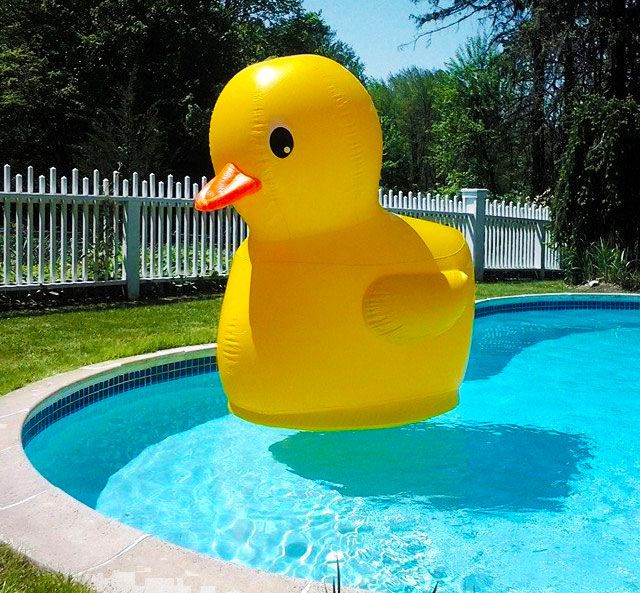There are over 10 million swimming pools in the United States, according to the University of Arizona Health Sciences department. If you're like most who love taking a dip in the summer, you want to swim in pools that are crystal clear with a healthy chemical balance. No one wants their eyes burning from too much chlorine. How much chlorine will it take to disinfect and oxidize your pool? What other chemicals should you be using? Take the guesswork out of getting your pool ready for summer with this handy pool chemicals guide.
Standard Pool Sizes
Most common residential pools are rectangular or kidney shaped with a length-to-width ratio of 2:1 and a depth of 3 feet on the shallow end to 6 feet on the deep end. Other shapes include circular, freeform, and square shapes.
The Tag Team: Chlorine and pH
Chlorine is measured in three ways: free chlorine, combined chlorine, and total chlorine. The amount that you need will depend on the pH of your pool--but, we'll get to that in a moment.
Free chlorine (FC) is the chlorine in your pool that keeps it sanitary. Ideally, it should be measured daily unless you have an automatic chlorinator system like many salt-water pool systems use. You know that strong chlorine smell that can emanate from your pool? That's the free chlorine breaking down bacteria such as urine and suntan lotions. It's called combined chlorine (CC). The sum of free and combined chlorine is your measure of the total chlorine (TC) in your pool.

To calculate the amount of free chlorine (or any other chemical) that your specific pool requires, you need three basic pieces of information:
1. How much water is in your pool? This is called your pool volume. It will be in gallons. Here's the standard equation to find out how much water your pool holds:
Your multiplier depends on what kind of pool you have. Use 7.5 for rectangle, square or free-form shapes and 5.9 for round or oval pools. Note that this is for in-ground pools only. An average pool volume benchmark is 15,000 gallons for an in-ground pool.
2. What change needs to take place in your pool? This is how much chemical you need in order to bring your pool to your desired level of change. For instance, if your pH is off, you can add chemicals to counteract acidity or alkalinity to bring pH back to the normal range.
3. Your chemical's label. On the label, you will find the "dosage" of the chemical that you need in order to adjust the chlorine to meet your specific pool's needs. Read your label carefully. It will instruct you about your pool chemical's usage.
Back to the chlorine-pH relationship
The amount of chlorine that you use is dependent on whether your pool water is too alkaline or too acidic. The pH scale runs from 0 (acidic) to 14 (alkaline). Pure water is neither acidic or alkaline, which puts you smack dab in the middle of the pH scale at 7. Pure water, although neutral, cannot neutralize the bacteria that grows in your pool. So you need the disinfectant power of chlorine. Chlorine works best when pH is lower. Sunlight, human skin, excrement and general debris can lower pH in your water. It takes time once free chlorine is added to your pool for it is disinfect. It's not pour it in and you're done.
Important: free chlorine's capacity to kill germs in your pool is relative to the pH of your pool water. That is why it is important to test your pH in accordance with your pool instructions.
Chlorine levels should be kept at 1.0 to 3.0 parts per million. Chlorine is the gold standard of pool disinfection. The other is bromine, which like chlorine, disinfects, but traditionally is used for small enclosures like spas.
Testing Your Pool's pH Level
You can buy dropper test kits or test strips to determine if you need to add chemicals like chlorine, bromine, or muriatic acid to your pool. Muriatic acid is added when your pH level is too high. Sodium carbonate or soda ash is used to when your pH is too low.
The Irritation Factor
If pH is lower than 7.0 (more acidic) or greater than 8.0 (more alkaline), you are at higher risk for eye and skin irritation. A couple of fast facts: the pH of a human tear drop is 7.4 and pipes can corrode the more acidic your pH is. Your eyes and skin will thank you to keep the pH between 7.0 and 8.0.
Pesky Algae
You'll probably deal with a couple batches of algae during your swim season. Algae loves to feed on phosphates, so to combat it you'll need a 1 gallon of Orenda PR-10000 phosphate remover. You'll want to keep your levels below 125 parts per billion.
Some Final Thoughts
If you're not math-inclined, use one of the handy online pool calculators. Remember, it is easier to add a chemical than to adjust pouring in too much chemical. So add the minimum at a time, wait a while, an hour or so, and allow the pool water to circulate before retesting pH. If you need some more, you can always add.

